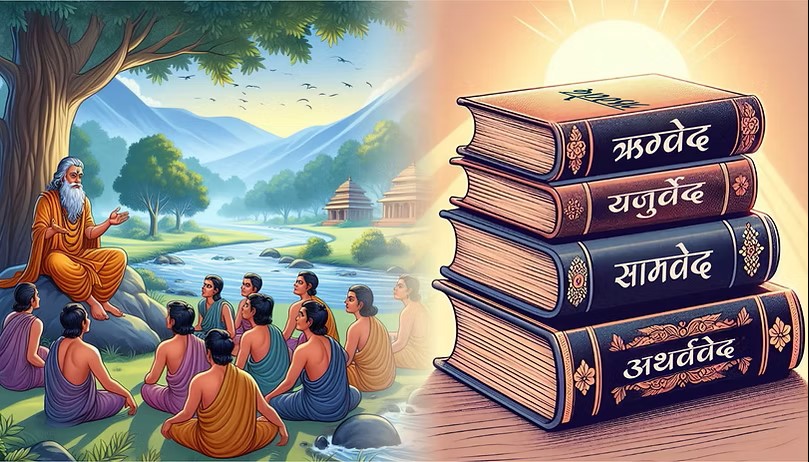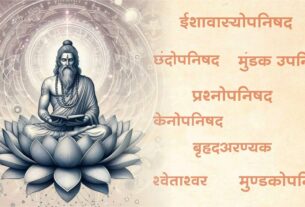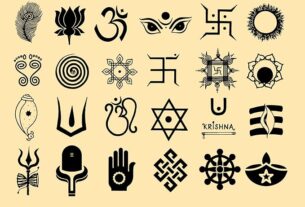The Vedas: Foundations of Ancient Wisdom
Introduction
The Vedas are the oldest and most revered scriptures of Hinduism, representing the bedrock of ancient Indian spiritual and philosophical thought. Composed in Sanskrit over three thousand years ago, these texts encompass a vast body of knowledge, including hymns, rituals, and philosophical discourses. This blog delves into the origins, structure, content, and significance of the Vedas, providing an in-depth exploration of their timeless wisdom.
Origins and Historical Context
The word “Veda” is derived from the Sanskrit root “vid,” meaning “to know.” The Vedas are considered “Shruti,” meaning “that which is heard,” signifying divine revelation received by ancient sages (Rishis) through deep meditation and spiritual insight. These texts were passed down orally for centuries before being committed to writing.
The composition of the Vedas is traditionally attributed to the early Vedic period (c. 1500–500 BCE). This era was marked by the migration and settlement of the Indo-Aryan people in the Indian subcontinent. The Vedic culture emphasized the worship of natural forces and deities through elaborate rituals and hymns.
Structure of the Vedas
The Vedas are divided into four main collections, each with its own unique content and purpose:
Rigveda:
The Rigveda is the oldest and most important of the Vedas, consisting of 1,028 hymns (Suktas) organized into ten books (Mandalas). These hymns are dedicated to various deities, such as Agni (fire), Indra (warrior god), and Soma (sacred plant).
The Rigveda is primarily a compilation of hymns used in sacrificial rituals (Yajnas) and praises to the gods.
Samaveda
The Samaveda is a collection of melodies (Saman) derived mainly from the Rigveda hymns. It consists of 1,549 verses organized into two parts: the Archika and the Gana.
The primary purpose of the Samaveda is to provide the musical chants for the rituals performed by the priests, adding a melodic dimension to the recitations.
Yajurveda:
The Yajurveda contains prose mantras and sacrificial formulas (Yajus) used in the performance of rituals. It is divided into two main recensions: the Shukla (White) Yajurveda and the Krishna (Black) Yajurveda.
The Yajurveda provides detailed instructions for conducting various Yajnas, including the offerings, invocations, and ceremonial procedures.
Atharvaveda:
The Atharvaveda is a collection of hymns, spells, and incantations, consisting of 730 hymns organized into 20 books (Kandas). It is distinct from the other three Vedas in its focus on practical aspects of daily life, such as health, protection, and prosperity.
The Atharvaveda includes hymns for healing, rituals for warding off evil, and invocations for success and harmony.
The Four Parts of Each Veda
Each Veda is further divided into four parts, each serving a specific purpose:
Samhitas:
The Samhitas are collections of hymns, mantras, and chants that form the core of each Veda. They are used in the performance of rituals and sacrifices.
Brahmanas:
The Brahmanas are prose texts that provide explanations and interpretations of the rituals described in the Samhitas. They offer insights into the significance of the rituals, the duties of the priests, and the symbolism of the sacrificial ceremonies.
Aranyakas:
The Aranyakas, or “forest treatises,” are texts intended for those who have retired to the forest to lead a life of contemplation and meditation. They serve as a bridge between the ritualistic Brahmanas and the philosophical Upanishads.
Upanishads:
The Upanishads are philosophical discourses that explore the nature of reality, the self (Atman), and the ultimate reality (Brahman). They mark a shift from ritualistic practices to introspective and contemplative thought, laying the foundation for Vedanta philosophy.
Key Themes and Philosophical Concepts
Brahman and Atman:
The Upanishads introduce the concepts of Brahman (the ultimate reality or cosmic spirit) and Atman (the individual soul or self). They emphasize the unity of Brahman and Atman, asserting that realizing this unity is the path to liberation (Moksha).
Dharma and Karma:
The Vedas emphasize the importance of Dharma (moral and ethical duties) and Karma (the law of cause and effect). These principles guide individuals in leading a righteous life and understanding the consequences of their actions.
Yajna (Sacrifice):
Sacrifice (Yajna) is a central theme in the Vedas, symbolizing the cyclical nature of life and the interconnectedness of the universe. Yajnas are performed to maintain cosmic order (Rta) and establish harmony between humans and the divine.
Meditation and Contemplation:
The later sections of the Vedas, particularly the Upanishads, emphasize meditation and contemplation as means to attain self-realization and spiritual knowledge. Techniques such as Pranayama (breath control) and Dhyana (meditation) are advocated.
Significance and Influence
The Vedas hold immense significance in Hinduism and have influenced various aspects of Indian culture, philosophy, and spirituality. Their teachings have shaped the development of major philosophical schools, such as Vedanta, Yoga, and Samkhya. The principles of Dharma, Karma, and Moksha continue to guide the ethical and spiritual lives of millions of Hindus.
The Vedas have also contributed to the fields of linguistics, astronomy, mathematics, and medicine. The precision and richness of Vedic Sanskrit have been subjects of scholarly study, while the Vedic rituals and hymns offer insights into ancient Indian science and cosmology.
Conclusion
The Vedas are a testament to the profound spiritual and intellectual heritage of ancient India. Their hymns, rituals, and philosophical teachings continue to inspire and guide seekers of truth and knowledge. By exploring the Vedas, one can gain a deeper understanding of the timeless wisdom that lies at the heart of Hinduism and its enduring relevance in the modern world.


